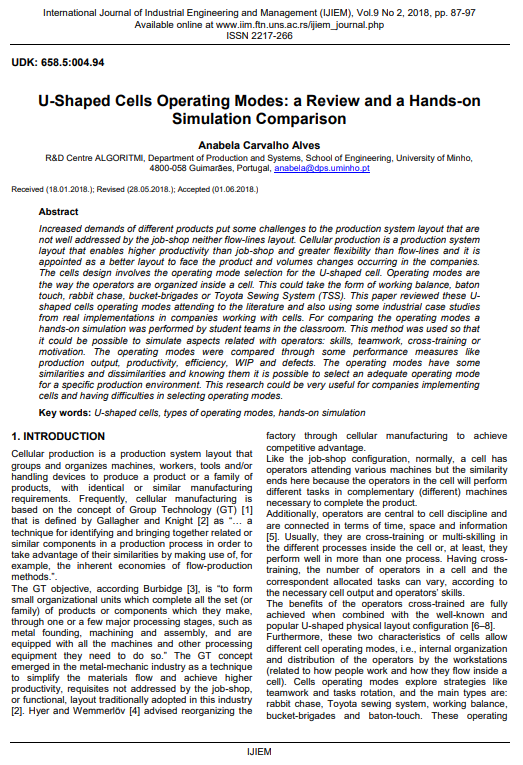U-Shaped Cells Operating Modes: A Review and a Hands-on Simulation Comparison

Published 2018-06-30
abstract views: 59 // FULL TEXT ARTICLE (PDF): 0
Keywords
- U-shaped cells,
- types ofoperatingmodes,
- hands-on simulation
How to Cite
Copyright (c) 2023 International Journal of Industrial Engineering and Management

This work is licensed under a Creative Commons Attribution 4.0 International License.
Abstract
Increased demands of different products put some challenges to the production system layout that are not well addressed by the job-shop neither flow-lines layout. Cellular production is a production system layout that enables higher productivity than job-shop and greater flexibility than flow-lines and it is appointed as a better layout to face the product and volumes changes occurring in the companies. The cells design involves the operating mode selection for the U-shaped cell. Operating modes are the way the operators are organized inside a cell. This could take the form of working balance, baton touch, rabbit chase, bucket-brigades or Toyota Sewing System(TSS).This paper reviewed theseU-shaped cells operating modes attending to the literature and also using some industrial case studies fromreal implementations in companies working withcells. For comparing the operating modes a hands-on simulation was performed by student teams in the classroom. This method was used so that it could be possible to simulate aspects related with operators: skills, teamwork, cross-training or motivation. The operating modes werecompared through some performance measures like production output, productivity, efficiency, WIP and defects. The operating modes have some similarities and dissimilarities and knowing themit is possible to select an adequate operating mode for a specific production environment. This research could be very useful for companies implementing cells and having difficulties in selecting operating modes.
Article history: Received (18.01.2018); Revised (28.05.2018); Accepted (01.06.2018)

